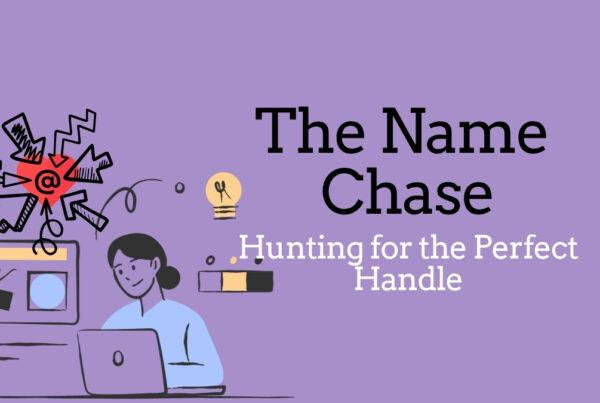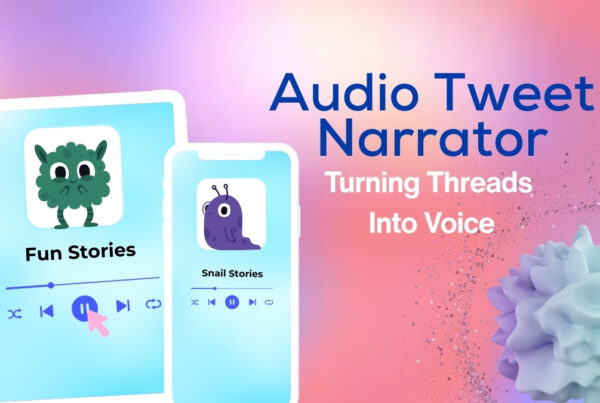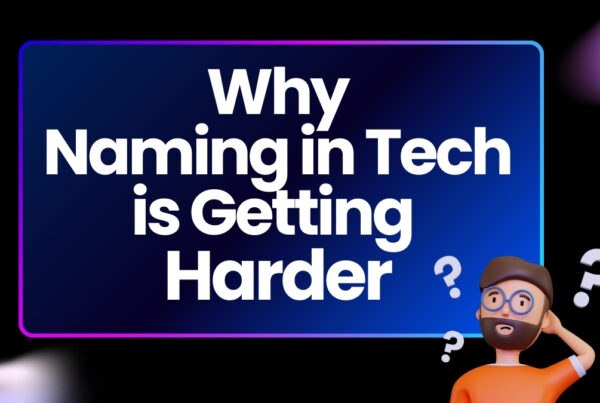Why Some Brands Choose to Be Unsearchable and What It Says About Strategy
The Paradox of Visibility
Most businesses will do whatever it takes to be found in a world where search engine optimization is crucial. They strive for the top rank on Google, polish their keywords, and get fixated on URLs. However, some people act in the other way. They choose names that are really hard to look up.
Consider companies with names like “?”,” “…,” or simply a single sign like “/.” These titles confuse SEO tools, irritate search engines, and give the impression that finding is more of a riddle than a procedure. Why, then, would anyone make it more difficult to be located?
That’s precisely the point sometimes.
The Rise of the Unsearchables
This trend is not just for underground art projects. You’ll find it in fashion labels, musicians, tech companies, and side projects. Some common naming tactics include:
- Using single characters or symbols
- Choosing hyper-common words like “Time” or “Go”
- Deliberate misspellings to confuse autocomplete
- Invisible tricks like leading or trailing spaces
These names blend into the noise of the web. You can’t Google them directly. You have to know where to look or be part of the circle already.
Why Make It Hard on Purpose
It sounds like sabotage at first. But for some creators, the unsearchable name is part of the playbook. Here’s why.
Exclusivity by Design
If your name cannot be Googled, only those who know you can find you. This creates a private club effect. You cannot stumble upon it. Someone has to tell you. That alone makes it feel more special.
Artistic Statement
Some artists use the name into their message. Refusing to participate in the SEO game is equivalent to turning down widespread notice. The goal is not to chase clicks. The goal is to establish a distinct kind of presence.
Creativity Through Limits
Without search, you are forced to get more creative. You build community. You rely on storytelling, social buzz, and personal referrals. These are not shortcuts. They are stronger channels that often create better long-term fans.
Search Saturation
You are using the same word against every article and product if your name is something like “Echo” or “Now.” Some producers take advantage of this and concentrate their efforts on being noticed elsewhere, such as via email, social media, or apps.
Real-World Examples
These names are not random. They are carefully chosen. Some brands and creators who used this approach include:
- A band named “The” that could only be found through flyers and direct links
- A design group named “…” that gives out access by QR code only
- A startup called “Hood” that exists mostly through community invites
- A chat app called “.” that never relied on Google and only grew through word of mouth
The name becomes a puzzle. Solving it is half the experience.
How to Pull This Off
If you want to use an unsearchable name, you’ll need a smart plan. Here are the keys to doing it well.
Own a Unique Domain
Even if your name is “Time” or “Gap” make sure your URL is clear like gettime.app or gaphq.com. That way people can still find you without needing to search.
Lock in Social Handles
Nowadays, social media apps are how most people will find you. Obtain corresponding Twitter, Instagram, and TikTok handles so people can follow the route.
Let the Tagline Do the Work
Your name might be invisible online but your tagline can anchor you. Make it specific and searchable. Use it in bios, headers, and everywhere else.
Focus on Direct Discovery
Focus more on creating immediate touchpoints and less on search. Consider viral sharing platforms, invite-only access, or email newsletters. The best unsearchables win this way.
Make It a Game
Do not hide forever. Just make it fun to discover. Use mystery and scarcity to your advantage. When people find you, it feels like a reward.
When It Works Against You
This strategy is not for everyone. It will backfire if:
- Your audience needs to search to buy or learn more
- You don’t have a strong community or referrals in place
- Your competitors have a similar name and better SEO
- You are early and lack enough buzz to build off
If your brand needs instant visibility or heavy traffic, this approach is a gamble. But if your brand thrives on personality, community, and creative tension, it might be your edge.
What This Trend Tells Us
Clarity is no longer the main objective, as more brands are beginning to recognize. Mystery can sometimes be more compelling than noise. People put in more effort when their name is hidden. And when they do, they have a clearer memory of you.
Names that provide explanations are giving way to names that present challenges. From straightforward labels to multi-layered riddles. And that change is crucial for some people.
What This Trend Tells Us
More companies are beginning to understand that there are other objectives besides clarity. There are moments when mystery is more compelling than noise. People are more motivated to work when their name is obscured. And they have a clearer memory of you when they do.
Names that explain are giving way to names that challenge. Layered puzzles and basic labels. And for some people, that change is crucial.
The Algorithm Isn’t Everything
The end line used to be searchability. You were a winner if your name appeared on the first page. However, as algorithms change, advertisements take over the top results, and consumers depend more on direct links and social apps, traditional search has become less effective.
Some creators choose to simply opt out rather than try to keep up with SEO trends. Stickiness is their wager rather than search. With the belief that if their product is good, the name doesn’t have to be Google-friendly, they rely on community, tone, and brand recall.
It is, in some respects, a return to analog thought in the digital age. The goal of a name is to win the individual, not the algorithm.
TikTok and the Death of the Search Bar
The way consumers currently find material is another factor fueling this change. TikTok, YouTube Shorts, and Instagram Reels have surpassed Google as the most popular websites for browsing. The mood you create is more important in those ecosystems than the name.
Whatever your brand is called, a brief video clip might become viral. People don’t follow the metadata; they follow the mood. Therefore, investing in content rather than keyword optimization is frequently a greater return for up-and-coming creators and brands.
A change has resulted from this. Naming becomes less about the actual string of characters and more about the culture you create around it. What it implies becomes less significant than how it feels.
Curiosity as a Branding Strategy
You must rely on curiosity when your name cannot be searched. That may be the hook, but it may also be a risk.
People enjoy solving puzzles. A strange or difficult-to-Google name transforms discovery into a story. They want to be part of the joke, to figure out the code, to claim, “I found it first.” Compared to a simple brand name, that tale travels more quickly.
Additionally, this strategy can strengthen loyalty. People will probably feel more connected to you if they have to search a little further or go off-platform to discover you. They didn’t find your stuff by accident. They found it.
Under-the-radar names can flourish in that psychological space between discovering and consuming.
The Role of Sound and Social Shareability
Names are frequently intended to be spoken rather than searched. Say it aloud. Send it on. Send it as a direct message or leave a comment.
These brands literally rely on word-of-mouth. Written discovery is giving way to verbal dissemination. You hear about it, not look for it.
At this point, memorability and phonetics become more important than spelling. While names like “Blip” or “Mmmh” may be awful for searches, they are memorable when spoken out loud. That type of oral dissemination is more human—and sometimes more successful—in a world when screens are everywhere.
When Searchability Becomes a Liability
Being easily Googled might backfire in some sectors. Consider internet activism, mental health services, or contentious art. Your name may be subject to examination, trolling, or even censorship if it is too simple or obvious.
To protect themselves, some creators and businesses are purposefully using names that are unclear or hard to identify. They seek reasonable deniability, or a sufficient separation from their true selves to maintain control. In these situations, the name serves as a shield instead than a focal point.
This is also not limited to edgy subcultures. Even well-known creators are beginning to understand that being overly searchable might lead to issues. A name that appears immediately in a school database, workplace screening, or background check could be a deal breaker. Thus, an odd difficult-to-Google handle turns into a kind of virtual shield.
Burnout on Branding Trends
And there’s exhaustion. Too many “easy to spell, easy to say, easy to search” names that seem generic, corporate, and forgettable have been seen by all of us. The names “Clickly,” “Tracksy,” and “Sendmate” are all jumbled. Despite adhering to all name conventions, they blend seamlessly with the background.
The opposite trend? Completely disregard the checklist. Pick an odd one. Pick something annoying. Select an idea that no one else would consider. Feeling alive is more important than simply being different. to have the impression that someone chose rather than adhered to a formula.
Originality is in high demand. Additionally, innovation frequently appears as chaos. or mystery, at the very least.
Underground Brands and the Power of Invite-Only Culture
Brands that rely on private Slack channels, text threads, Finstas, and Discord invites are known as unsearchable names, and they flourish in what you may refer to as the “underground internet.” They want to delve deeply, not get viral.
Their approach doesn’t work. It’s resonance. They also employ mystery as a defensive barrier.
You need someone to bring you in when you can’t easily Google anything. Status is created in this way. It fosters a sense of community. Additionally, it gives those who discover it a sense of insider knowledge.
This is how some of the most devoted fan audiences have been developed—slowly, through tightly connected networks and whispered recommendations. Instead of being a billboard, the name becomes a signal.
Creative Constraint Breeds Iconic Names
Surprisingly, this naming trend’s limits often foster more creativity. When “search-friendly” is ruled out as a goal, you begin to think in more unusual and emotional terms. You pay attention to tone. Feel the texture. vibe. Instead of asking how it ranks, you ask how it feels.
This creates room for evocative single words, inside jokes, or poetic names. Things like “Brainfog,” “Somewhere Else,” “ctrlz,” or “???” are the result of it.”
These names don’t work well for search engine optimization. However, they remain in your memory. And eventually, that stickiness turns into reputation.
Final Thoughts
Choosing a name you can’t Google might seem like a mistake. But for the right person, it’s a power move. It flips the script. It adds tension and purpose. And when done well, it turns your name into an experience worth discovering.
Choosing a name you can’t Google might seem like a mistake. But for the right person, it’s a power move. It flips the script. It adds tension and purpose. And when done well, it turns your name into an experience worth discovering.
But not every name should be a mystery. If you’re launching something new, sometimes clarity is the advantage. In our next article, How to Choose a Name That Makes Your Startup Stand Out, we break down the principles behind startup naming — from memorability to market fit — and how to make your brand impossible to ignore from day one.




